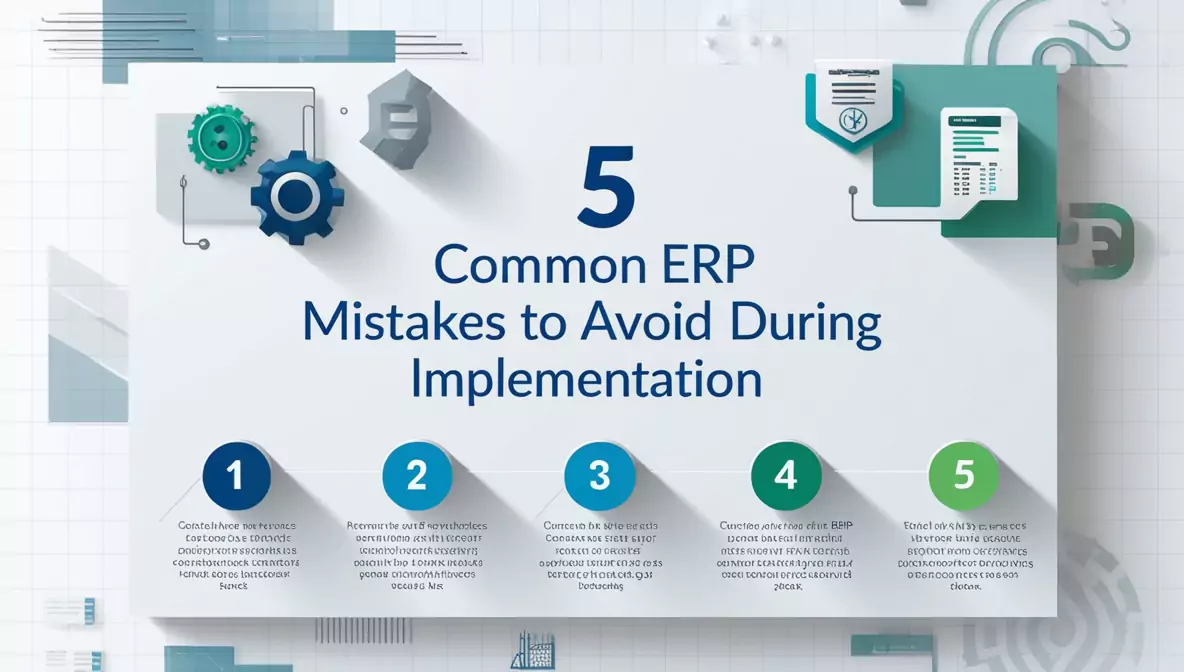Implementing an Enterprise Resource Planning (ERP) system is a significant investment that requires careful planning and execution. Unfortunately, many businesses encounter challenges during the ERP implementation process that can lead to costly mistakes, project delays, and even outright failure. To ensure a successful ERP implementation, it’s crucial to be aware of the most common pitfalls and take proactive steps to avoid them. Here are the top five common ERP mistakes to avoid during implementation:
1. Inadequate Planning and Poor Requirements Analysis
One of the most common and critical mistakes businesses make during ERP implementation is inadequate planning. Rushing into an ERP project without thoroughly understanding your business needs can lead to poor results. Many companies fail to conduct a comprehensive requirements analysis, which results in selecting an ERP system that doesn’t fully align with their business processes.
How to Avoid It:
- Take the time to define clear objectives and goals for the ERP system.
- Conduct a detailed business process analysis to identify the areas that need improvement.
- Involve key stakeholders from each department to gather requirements and ensure that the ERP system meets the needs of every part of the business.
- Create a well-defined project plan with a timeline, budget, and milestones to guide the implementation.
2. Choosing the Wrong ERP System or Vendor
Selecting the wrong ERP system or vendor can have long-lasting negative impacts on your business. A poorly chosen system may lack critical features, be incompatible with existing software, or require extensive customization. Choosing a vendor with limited industry experience or poor customer support can also lead to implementation difficulties.
How to Avoid It:
- Evaluate multiple ERP systems and vendors before making a decision. Request product demos and involve end-users in the evaluation process.
- Choose an ERP solution that is scalable, flexible, and designed to meet the specific needs of your industry.
- Check vendor credentials, customer reviews, and references. Make sure the vendor has a proven track record in your industry.
- Consider the total cost of ownership (TCO) when choosing an ERP system, including software, hardware, implementation, training, and support costs.
3. Underestimating the Importance of Change Management
Implementing a new ERP system often requires significant changes to business processes, workflows, and employee responsibilities. One of the most common mistakes is underestimating the impact of these changes on staff and failing to manage change effectively. This can lead to user resistance, low adoption rates, and failure to fully leverage the ERP system’s capabilities.
How to Avoid It:
- Develop a change management strategy early in the project. Communicate the benefits of the ERP system to employees and involve them in the decision-making process.
- Provide comprehensive training for all users based on their roles and responsibilities. This includes hands-on workshops, user manuals, and ongoing support.
- Identify change champions within each department who can advocate for the new system and assist their colleagues during the transition.
- Foster a culture of open communication to address concerns, gather feedback, and make necessary adjustments during the implementation.
4. Insufficient Testing and Data Validation
Skipping or rushing through the testing phase is a major mistake that can lead to critical errors after the ERP system goes live. Insufficient testing can result in system bugs, data inconsistencies, and workflow disruptions, all of which can impact daily operations. Poor data validation during migration can also cause data integrity issues, leading to inaccurate reports and unreliable business insights.
How to Avoid It:
- Conduct thorough testing at every stage of the implementation, including unit testing, integration testing, and user acceptance testing (UAT).
- Perform multiple rounds of testing to identify and address any issues before the go-live date.
- Validate data carefully before migrating from the old system to the new ERP. This includes cleaning, standardizing, and checking data for accuracy.
- Involve end-users in the testing process to ensure that the system meets their requirements and that they are comfortable using it.
5. Ignoring Post-Implementation Support and Continuous Improvement
Many businesses make the mistake of considering ERP implementation as a one-time project that ends with the go-live phase. In reality, the go-live is just the beginning. Ignoring post-implementation support and failing to focus on continuous improvement can result in system inefficiencies, missed opportunities, and a lack of ROI.
How to Avoid It:
- Plan for ongoing support and system maintenance after the ERP system goes live. This includes having a dedicated support team to assist users with any issues that arise.
- Monitor key performance indicators (KPIs) to measure the ERP system’s effectiveness and identify areas for improvement.
- Schedule regular system audits and updates to ensure that the ERP continues to meet business needs.
- Provide additional training sessions for new hires and existing employees as the system evolves and new features are introduced.
Conclusion
Avoiding common ERP implementation mistakes requires careful planning, strategic decision-making, and continuous attention to detail. By understanding the pitfalls that often derail ERP projects, you can take proactive measures to ensure a successful and seamless implementation. From thorough planning and selecting the right ERP system to effective change management and post-implementation support, every step is crucial in maximizing the value of your ERP investment.
Taking the time to do it right from the start will not only save time and money but also help your business achieve greater efficiency, productivity, and long-term success with your new ERP system.
